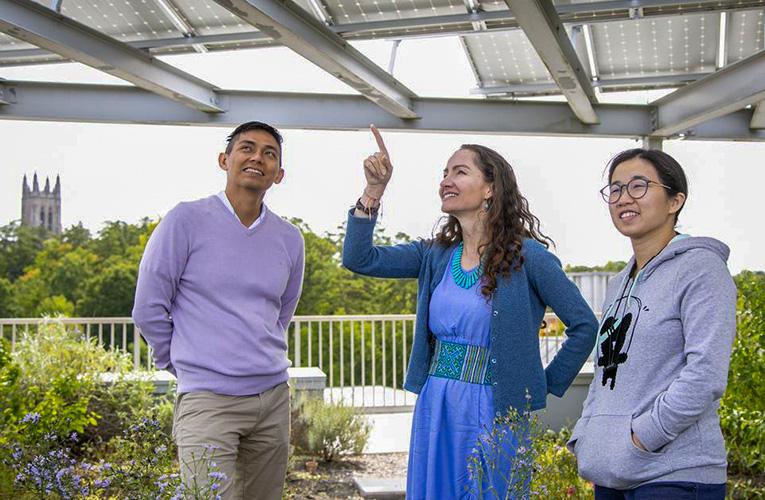Tim Lucas, (919) 613-8084 or tdlucas@duke.edu
DURHAM, N.C. — Algae may hold the key to helping scientists devise a negative-emissions technology that produces electricity and provides protein for millions of people worldwide while simultaneously removing substantial amounts of carbon dioxide from Earth’s atmosphere and reducing deforestation.
Researchers at the University of Hawaii at Hilo (UH-H), Duke University and Cornell University presented their conceptual model for the innovative technology in a peer-reviewed paper published March 24 in the open-access journal Earth’s Future.
The new system – which the paper’s authors call ABECCS, or algae bioenergy with carbon capture and storage – integrates the protein- and biofuel-producing capabilities of industrial-scale microalgae production with the energy output of conventional bioenergy systems that burn wood to generate electricity and then capture and store the resulting carbon dioxide underground.
“This integration allows us to circumvent one of the major criticisms of wood-burning bioenergy with carbon capture and storage (BECCS), which is that it uses up large amounts of land and freshwater that otherwise could support natural forests and agriculture,” says Zackary Johnson, Arthur P. Kaupe Associate Professor of Molecular Biology in Marine Science at Duke.
“By comparison, marine microalgae are tiny plants that can be produced using seawater and grown in higher quantities per square foot than land crops, in areas unsuitable for agriculture,” Johnson says. “A major challenge to growing algae on an industrial scale is that it requires large amounts of electricity and C02 – ABECCS helps to address this concern.”
To evaluate the feasibility of their concept at an industrial scale, the researchers devised a theoretical ABECCS model in which a 7,000-acre field of soybeans is replanted with fast-growing eucalyptus trees, the wood from which is harvested and burned through BECCS to provide electricity and CO2 to an algae production facility. The scientists then estimated the amount of excess electricity and protein that such a facility would produce, as well as the amount of carbon dioxide it would sequester.
Their analysis showed that the experimental ABECCS facility could yield as much high-quality protein as the original 7,000-acre soybean field, while simultaneously generating 17 million kilowatt hours of electricity and sequestering 30,000 tons of CO2 each year.
The system’s economic viability depends on the price of carbon and the market value of the protein-based nutritional products being produced – proteins intended for human consumption fetch a higher price than those for feedstock. Even without a carbon price, microalgae production is commercially viable today if the algae are priced as a fishmeal replacement in aquafeeds, the researchers note.
“In the future, as the price of carbon increases, ABECCS will have even greater potential to reduce carbon dioxide in the atmosphere in an environmentally sustainable and profitable way,” says Charles Greene, professor of earth and atmospheric sciences at Cornell.
Other authors of the new paper are Colin Beal and Ian Archibald of UH-H’s College of Agriculture, Forestry and Nature Resource Management, and Mark Huntley, who is affiliated with UH-H, Duke and Cornell.
Funding came from the U.S. Department of Energy.
Johnson is a faculty member at the Duke University Marine Lab, which is part of the Nicholas School of the Environment.
CITATION: “Integrating Algae with Bioenergy Carbon Capture and Storage (ABECCS) Increases Sustainability,” Colin M. Beal, Ian Archibald, Mark E. Huntley, Charles H. Greene and Zackary I. Johnson; March 24, 2018, Earth’s Future. DOI: 10.1002/2017EF000704
###



